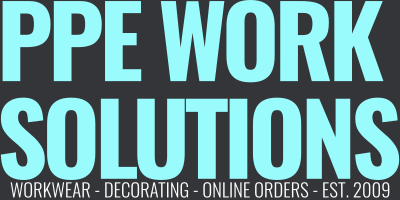Your Cart is Empty
📞 01246 268649 🚚 FREE DELIVERY
Menu

📞 01246 268649 🚚 FREE DELIVERY
Clothing
A Guide to the Best Clothing and Equipment You’ll Need to Dismantle a Used Kitchen!
January 27, 2023

Dismantling a kitchen can be quite time consuming and to ensure the process goes smoothly, the right tools, equipment and clothing are needed. In this blog post we are going to tell you the things that will help you remove a kitchen quickly and easily. Of course, if you are not comfortable removing your kitchen yourself, there are many specialist removal companies that will get the job done. What’s more some suppliers can guarantee no damage to your appliances and worktops, which can be tricky if you are doing it yourself and don’t have experience!
Getting Started
The first step to successfully dismantling your kitchen should be to clear your kitchen of everything that could get in the way of the process. The less stuff around your kitchen, the easier it will be to remove. Next, you want to remove any doors or drawers that can be unscrewed and stored separately. This will make taking out the whole cupboard much easy and lighter to transport.
We recommend labelling all cupboard doors or drawers that you take out, so that it is easy to match them back up when it comes to installation. A simple step that can make a huge difference! The last stage you need to complete, before you start removing fixed units and worktops, is to turn off all taps and valves (water and gas). For safety measures, it is a good idea to turn off all plug sockets as well.
Removing Fixed Units

The sink should always be the first thing removed from the kitchen. The tools that you need to help you do this are: a bucket, a slotted screwdriver, a wrench, and a pipe cutter.
First you need to disconnect the water supply pipes, then disconnect the drain pipe. Next, carefully cut through the caulking that secures your sink and detach the sink from the countertop.
You should now be able to pull the sink out form the worktop, if it is a bit tight, give the sink a wiggle from the underside to loosen it. The kitchen cabinets should be straightforward to remove as they are likely to be secured by a few screws or nails.
Worktops can be fitted in a few different ways, if your worktop is attached by screws to the sides of the kitchen unit, make sure to unscrew them and cut the caulking (if there is any) around your worktop(s), your worktops may be ready to simply lift up and take away. They may also be drilled into the frames of the units below and then attached with screws. It is very possible that adhesive has been used to the underside of the worktop to provide extra strength. If so, a crowbar may help you to prise your worktop from the units attached. Make sure you do this part very slowly and precisely, to help prevent any damage to the worktop.
Electrical appliances such as the microwave and oven, should just be attached by screws, so just simply unscrew and slide out.
Protective Clothing

Remember that all the things that we mentioned above to help you remove your kitchen should be done so, carefully. PPE (Personal Protective Equipment) clothing should be worn at all times in order to prevent any injuries or irritation which will make the whole removal process much harder. Protective clothing and equipment that should be used include: Safety googles, work gloves, dust masks, safety boots and a hard hat for when removing high up, wall mounted shelfs and cupboards.
Kitchen Exchange
This blog was written by Kitchen Exchange who provide a specialist online market place for used kitchen. This means that Kitchen Exchange is, ‘The place to go,’ if you want to sell your used or ex display kitchen. Their online shop, also offers a large range of used and ex display kitchens including designer kitchens.
Visit their website here: www.kitchenexchange.co.uk or give them a call on 0800 999 6889 or email them at info@kitchenexchange.co.uk.
